 
|
||||
|
|
ERIK DAHL ENSEMBLE |
|||
|
A Swedish native based in the port city of Gothenberg, Erik Dahl released the first Ensemble album, and then in 2022 he released his solo album, Music For Small Rooms, that featured several members of the Ensemble yet it also had a unique solo effect in its own right. However, make no mistake about it Everyone's Too Sad For Everything is modern 21st century music. Any of the above references to the original RIO sound of the 1970s are strictly subliminal and if anything, the jazzier elements are protracted delightfully. The experimental, eclectic and avant-garde nature of Everyone's Too Sad For Everything puts it squarely in the instrumental art-rock and global fusion camps. There is also a kind of Swedish element in play here that at times evokes other great Swedish composers, for a variety of reasons, like electronica / classicist Ragnar Grippe, the soundtrack airs of Stefan Nilsson and, speaking about Stefan Nilsson, the music on Everyone's Too Sad For Everything also evokes Stefan’s friend, the late Finnish progressive impressionist Pekka Pohjola during his Chamber-jazz period of the early 1970s. The fact this might have been passed down through osmosis is a possibility mostly because some of the Ensemble members were born after the heyday of RIO and the musicians mentioned above. Acquitting himself on piano and assorted electronics, Erik Dahl is a certified musical alchemist and he makes the most of the ensemble’s various members, including tempo lynchpin William Soovik (drums, percussion), Anna Cochrane, (violin/viola), Andreas Thurfjell, (alto-/baritone sax/clarinet) Anna Malmström, (clarinet/bass clarinet), Viktor Reuter, (double bass) and Erik himself on piano and electronics. Despite the relative sadness of the music, not to mention the disconcerting title of the album, there’s also a rare beauty in every track here, a beauty that unfurls with each and every note. “Lagim” begins Everyone's Too Sad For Everything with a funereal tone that is rather reminiscent of the horn-dominant, chamber jazz found on the second solo album from 1974-75 by the above mentioned Pekka Pohjola, albeit from a Swedish perspective. As on all the tracks on Everyone's Too Sad For Everything, the group interplay is most impressive, fostering a kind of progressive ESP. A sonic hallmark of Everyone's Too Sad For Everything is the way the tracks often start with a whisper, building towards a kind of sonic wall of sound that draws you further into its web. A good example of that is on the 6+ minute “The Woods Within”, with its steady, sonic pacing that ascends upwards around the 4 minute mark with the horns, drums and bass matching Dahl’s intentive melodies. As on the first Erik Dahl Ensemble album, “Gethenian Suite”, where the track “Ice” was the 11+ minute highlight, the track “Unfolding”, a 9+ minute track that organizes a series of contrasting melodic threads, is among the most portentous and progressive tracks Dahl has yet composed. The way electronics, drums and piano combines with a variety of ensemble instruments is beyond impressive. Another relatively short track here called “Vulkan” seethes with stealth precision, with piano and strings forming an undercurrent that soon crescendos and skittles into the 7+ minutes of “Ceremony”, which soon develops into one of the more upbeat tracks on the album. The probable title track “Too Sad” is a melodic tour-de-force that all but encapsulates the ruminative yet overall hopeful nature of Everyone's Too Sad For Everything, while the CD-closing, with the cryptically Swedish title “Frostblommor till Emma Niskanpää” ends Everyone's Too Sad For Everything with its pensive, jazzy group interplay. An album as good as Everyone's Too Sad For Everything is deserves to be enjoyed by fans of jazz, neoclassical and progressive music. Following Dahl’s 2022 solo album, Music For Small Rooms, the ten-track, 60 minute Everyone's Too Sad For Everything is brimming with propelling ingenuity, making it essential listening for fans of the ever inventive and always evolving Swedish music scene of the 2020’s.
mwe3.com presents a new interview with
Erik Dahl: When Gethenian Suite was released we had a concert in Gothenburg. It was the 12th of March 2020 which was the last day of concerts. Then the long isolation started. I soon decided to use the time to compose a new album. Our previous album had a fixed dramaturgy from beginning to end. I wanted to make this one looser, where each song was its own, yet with some common theme. Being alone amplified my feelings of loneliness and sadness. This was the mood I was in when I found in a sentence by Margaret Atwood the phrase ”Everyone’s too sad for everything”. It connected with my feeling of struggling on my own, knowing that everyone else was doing the same thing. It’s a really open ended phrase with a sort of dark humor to it. So I decided to use it to structure the album. Each song is exploring my reactions to the situation, ranging from despair, apathy to longing and hope. mwe3: Everyone's Too Sad For Everything was recorded in November 2021, which was still during the pandemic lockdowns. What had changed in Sweden between November 2020 and November 2021? Tell us something about recording at the Studio Epidemin, for example was the album was all cut live and were there any overdubs? I take it that no one caught the virus during the recording sessions? They are saying this virus is coming back again. It’s all been very confusing, like it’s teetering on collapse. Erik Dahl: Yes, it was recorded in November 2021. The Swedish government had a slightly different strategy for dealing with the pandemic. We didn’t have a strict lockdown, but other types of restrictions aiming to minimize contact and spread of the virus. This meant you could, for instance rehearse, but it was extremely fragile... if someone had any symptoms you would cancel. Travelling was also difficult, not strictly forbidden but considered unethical and avoided unless there was some convincing reason. We did change bass player in 2021, Tove had to prioritize other things, and so Viktor joined us instead. With Tove living in Uppsala (500 kilometers away) rehearsing had been impossible. Now we could do it, and rehearsed mostly in sections. It was really stressful booking a studio for 3 days and it’s a small miracle that we could record without anyone catching a cold or the virus. Most of it was recorded live in the studio. It has five separate recording rooms. Some of the electronic production was added later.
Erik Dahl: The two albums have a lot of common ground stylistically. The new album is at times a little darker. One difference is that on Gethenian Suite a lot of melodic material was shared, e.g. the main themes appear on “Gethen”, “Parade”, “Karhide Fugue”, “The Ice” and “The Ekumen”. “Orgoreyn” and “Pulefen Farm” are connected, and so are “The Envoy” and “Estraven”. On Everyone’s Too Sad For Everything each song is self-contained. The line-up is almost the same; Viktor replaces Tove on the double bass. He has been substituting before and has an instant understanding of the music. Andreas is playing clarinet on a few songs which gives a softer sound. There is also a bit more improvisation with soloistic moments for each musician. It is still very integrated into the compositions, like adding additional colors. I think the musicians contribute a lot and the more we play the more they spark fire. mwe3: Everyone's Too Sad For Everything begins with the track “Lagim”. Is that a Swedish word or term? I saw that it’s also a word in the Philippines too. How does “Lagim” set the tone for the music that follows and why did you choose that track to open the new album? It’s filled with musical contrasts yet it’s quite effective. Erik Dahl: “Lagim” is an interesting word. It is a Sami word meaning Mountain Birch. That’s a variety of birch that can grow in really harsh conditions. I like the image of this small and unassuming tree that can withstand extreme wind and cold. The music is tangled, jagged, gnarly, yet powerful. I think it’s a good start, not too dark and not too optimistic either. I later found out about the Philippine word which means ”terror” or ”dread”. Not intended but strangely fitting, like a subconscious thing.
Erik Dahl: “The Woods Within” had as inspiration a track by The Haxan Cloak, I think it’s called “Mirror”. It is very different from the source, more like the track gave me a certain feeling and got me started on the melody. I wanted to stay close to that initial feeling. The arrangement is based around obscuring the melody, just playing fragments and blending it with the sampler sounds. The short interludes have more mysterious harmonies. When the melody is finally played out it is drowning in the organ. For the electronic part I recorded bells and harmonium through a cassette recorder, making it deliberately noisy. It is then further processed and played back through a sampler. We also recorded the electronics through an Onde, a kind of resonator/speaker which makes it very present in the room. mwe3: “Join The Dots” has an interesting title. Is that a title born out of the pandemic? Here we use the term “connect the dots” when we think there’s more going on than what simply meets the eye. The music is sad but you also say people are strong enough to find new patterns to live by. How did you “Join The Dots” while writing this track and what does the track and title mean to you?
The strictness contrasts nicely with the loose improvised feel. The title is very literal but it is of course also a metaphor. It is a request: Think! If you have all the facts you can draw your own conclusions. I believe people are capable of making informed intelligent choices. The song is also a way of showing that intellectual ideas can be quite fun. mwe3: I like the way “Join The Dots” moves quickly into “The Fragile Ones”. There’s a streak of hopefulness in “The Fragile Ones”. Did you want the track to give some hope to “The Fragile Ones”, which you say, after all, is really all of us. Erik Dahl: “The Fragile Ones” was started before the pandemic. I was at a residency in Denmark in 2019 with a group of artists and wrote the beginning of the song there on an out of tune piano. I strongly identify with the group and see both them and myself as fragile ones. Yes perhaps it includes all of us. The combination of fragility and strength that I experienced in the group was very palpable. I don’t think it’s a coincidence that these qualities are connected. To reach your creativity it is necessary to remove your filters and let go of control. It reveals a vulnerability that I find beautiful. mwe3: “Nocturnal” is a bit spooky and it’s also the shortest track on Everyone's Too Sad For Everything. Is “Nocturnal” a kind of forewarning that leads into the longest track “Unfolding”? It’s quite animated with the syncopated bass and the flurry of horns.
mwe3: Is “Unfolding” the central focus track on Everyone's Too Sad For Everything? It has so many moods and moves that make it the most complex track on the new album. You speak about an ‘anchor point’ in the track that gives it a kind of hypnotic sway and then the synths kick in. Does “Unfolding” have a kind of rock sound, the way the synths blend with the drums and horn, in this case a bass clarinet? “Unfolding” goes through a lot of changes and it's also the longest track on the new album. Erik Dahl: Yes, “Unfolding” is quite a central track. There is something like a rock sound with the bass riff and the slow drum groove. It is a direction I would like to explore further. Originally it was much softer, dreamy, but then it started to live its own life. The intro is a rich collage of sound, field recordings, sampled harmonium, coil pickups and other experiments interlaced with melodies in violin and winds. The melody in sax and violin is more piercing. The piano then explores the melodic material with a very soft sound. Noise and synths return together with the riff and melody. mwe3: “Unfolding” moves into “Vulkan”, which is one of the most mysterious sounding tracks on the album. It’s a very shadowy sounding track with lots of synths and the drumming is spectacular. How would you describe “Vulkan”? First I thought it might be inspired by Star Trek as Mr. Spock was said to be Vulcan. What does “Vulkan” translate to in Swedish? Erik Dahl: “Vulkan” is Swedish for volcano. It’s like an eruption. I love this kind of drone-y texture. The drums are essential. We added more drums afterwards! mwe3: “Ceremony” begins with a low key and somber opening but it picks up with a merry section and the drumming is excellent. Is “Ceremony” one of the more upbeat and optimistic sounding tracks on Everyone's Too Sad For Everything and what does the track “Ceremony” signify to you?
mwe3: Is “Too Sad” considered the title track? Is it one of the more melodic pieces you’ve composed? Paradoxically the song isn’t sad but kind of optimistic, tell us about the keyboard sounds you play during the last two minutes of “Too Sad”. Erik Dahl: “Too Sad” relates to the album title, still I wouldn’t say it’s the title track. The title says everyone’s too sad yet the world is still going on. One interpretation is that the sadness is real but that it’s just one aspect of who we are. Acknowledging that we are too sad helps us transcend that feeling and find other ones, like determination, curiosity or joy. I like the simplicity of the song. To me it sounds melancholic. The saxophone solo is backed by a countermelody on bells and a sampler sound based also on bells. mwe3: While the song titles on Everyone's Too Sad For Everything are in English, the final track does have a Swedish title. Tell us about “Frostblommor till Emma Niskanpää” Tell us about Emma Niskanpää and how she fits in to the song title. It’s a very musical track, very animated and it’s a great way to close out the album. Erik Dahl: The Swedish title is just to remind myself that I’m from Sweden. I think it sounds better in Swedish. “Frostblommor” would translate as Frozen Windows, literally frost flowers, beautiful patterns that appear on windows when it’s really cold outside. Emma Niskanpää is a character in the stunning novel “Hitom Himlen” (“This Side of Heaven”, 1946) by Stina Aronson. Emma is a Laestedian, a really strict pietistic church, her life is all hard work. These patterns are among the few things she can enjoy in this life that’s not considered sinful. She could find a little beauty. I feel like, bring some more flowers for her to enjoy! mwe3: Who are you listening to musically these days? Are you working with other artists in other forms and other musicians and singers as well? Erik Dahl: I listen to a lot of music. Some recent favorites include new and old music by Benedicte Maurseth, Mats Eilertsen, Ida Toninato, Tomas Köner, Lisen Rylander Löve, Ingfrid Breie Nyhus, Mercedes Sosa. Among other projects, Levure Sauvage/Klubb Obsidian is a collaboration with bassist Donovan Von Martens focusing on electronic improvisations, let’s call it experimental ambient. I Underlandet is a folk duo with Anna Cochrane. We have some new music that we are planning to record.
Erik Dahl: Really excited to see how the album is received. The first priority at the moment is playing live shows. I have many ideas about where to take the music in the future. I do follow lots of wonderful artists both Swedish and Norwegian and some I feel strongly connected to. I want to send some love to the community of musicians in Gothenburg, which has a very friendly and supportive atmosphere.
|
|
|||
|
||||

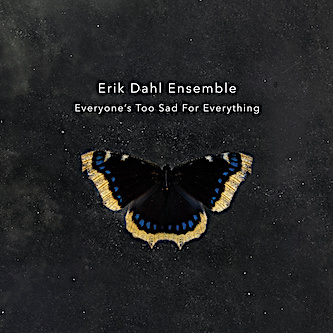 Following their critically acclaimed debut album from 2021, entitled Gethenian Suite, Erik Dahl Ensemble are back with a cryptically titled album called Everyone's Too Sad For Everything. With the music written while coming out of the pandemic era, the sound code within is dark and deep and provides the perfect sonic scenario for adventurous neoclassical influenced prog-rock fans attuned to the styles of the 1970’s Rock In Opposition movement that starred Henry Cow, Universe Zero, von Zamla, Art Zoyd and other bands and artists tuned into RIO.
Following their critically acclaimed debut album from 2021, entitled Gethenian Suite, Erik Dahl Ensemble are back with a cryptically titled album called Everyone's Too Sad For Everything. With the music written while coming out of the pandemic era, the sound code within is dark and deep and provides the perfect sonic scenario for adventurous neoclassical influenced prog-rock fans attuned to the styles of the 1970’s Rock In Opposition movement that starred Henry Cow, Universe Zero, von Zamla, Art Zoyd and other bands and artists tuned into RIO. 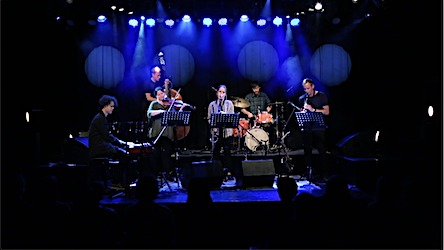 One of seven tracks clocking in over 6 minutes, “Join The Dots” is a truly gripping track that blends horns and piano before the double bass brings in yet another flavor before it conveniently segues into the Pohjola-esque horn series of “The Fragile Ones” with its colorful intertwining of horns and strings, propelled by the drums. The shortest track on Everyone's Too Sad For Everything comes by way of the 2+ minute “Nocturnal” and it’s also the most startling with its punctuated drums and bass components, before the strings come in and take control.
One of seven tracks clocking in over 6 minutes, “Join The Dots” is a truly gripping track that blends horns and piano before the double bass brings in yet another flavor before it conveniently segues into the Pohjola-esque horn series of “The Fragile Ones” with its colorful intertwining of horns and strings, propelled by the drums. The shortest track on Everyone's Too Sad For Everything comes by way of the 2+ minute “Nocturnal” and it’s also the most startling with its punctuated drums and bass components, before the strings come in and take control.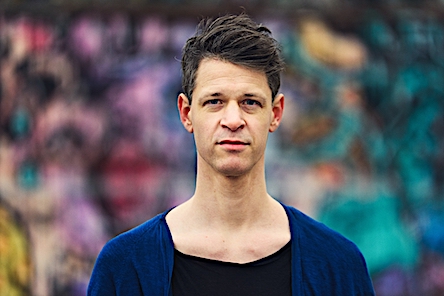 mwe3: What kind of parameters did you set out to build upon before and during writing and recording Everyone's Too Sad For Everything? You said, unlike Gethenian Suite and Music For Small Rooms, the new album was written during the global pandemic. Was that sadness felt by you during the composing and recording process? Can you hear the sadness in the tracks? With this album, you've captured the essence of modern Swedish instrumental music.
mwe3: What kind of parameters did you set out to build upon before and during writing and recording Everyone's Too Sad For Everything? You said, unlike Gethenian Suite and Music For Small Rooms, the new album was written during the global pandemic. Was that sadness felt by you during the composing and recording process? Can you hear the sadness in the tracks? With this album, you've captured the essence of modern Swedish instrumental music. 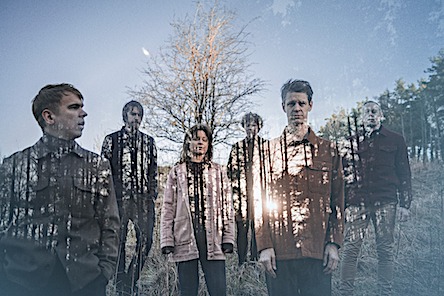 mwe3: Can you draw a musical parallel between Gethenian Suite and Everyone's Too Sad For Everything, at least stylistically or melodically? Was it the same lineup of musicians for both albums and what were some of the similarities and would you say the musical ESP between the members of the Ensemble has only grown stronger?
mwe3: Can you draw a musical parallel between Gethenian Suite and Everyone's Too Sad For Everything, at least stylistically or melodically? Was it the same lineup of musicians for both albums and what were some of the similarities and would you say the musical ESP between the members of the Ensemble has only grown stronger? 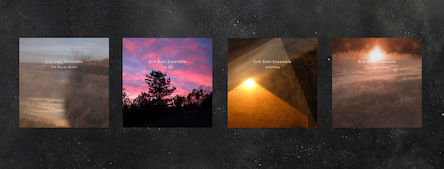 mwe3: “The Woods Within” is a highlight as the album unfolds and you also released it as a single track. You said it was inspired by an electronic music track that inspired you to write for the ensemble and you said you added a noisy sampler patch created by the trams outside your studio. Is “The Woods Within” a good example of how you maximize the various instruments in the Ensemble? Tell us about how you blend the acoustic instruments with the synths including the sampler patch and the organ synth. Is the synth played throughout the entire track? Everything is blended so skillfully on “The Woods Within”. What type of synth model are you playing?
mwe3: “The Woods Within” is a highlight as the album unfolds and you also released it as a single track. You said it was inspired by an electronic music track that inspired you to write for the ensemble and you said you added a noisy sampler patch created by the trams outside your studio. Is “The Woods Within” a good example of how you maximize the various instruments in the Ensemble? Tell us about how you blend the acoustic instruments with the synths including the sampler patch and the organ synth. Is the synth played throughout the entire track? Everything is blended so skillfully on “The Woods Within”. What type of synth model are you playing?  Erik Dahl: With “Join The Dots” I’m thinking of the kind of drawing books for children where you draw lines between dots and then a dinosaur or a butterfly appears. So it’s a really playful title. The thing is the composition is written with a device called a ‘tone row’. Basically a series of pitches that guide the melody as well as the harmony. So by joining the dots we form the song itself.
Erik Dahl: With “Join The Dots” I’m thinking of the kind of drawing books for children where you draw lines between dots and then a dinosaur or a butterfly appears. So it’s a really playful title. The thing is the composition is written with a device called a ‘tone row’. Basically a series of pitches that guide the melody as well as the harmony. So by joining the dots we form the song itself. 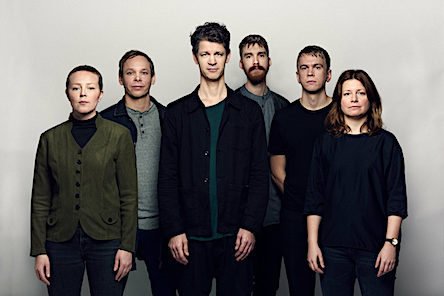 Erik Dahl: “Nocturnal” is really my darkest mood, where no escape is seen, despair is rushing through the body. I don’t like dwelling there too long.
Erik Dahl: “Nocturnal” is really my darkest mood, where no escape is seen, despair is rushing through the body. I don’t like dwelling there too long. 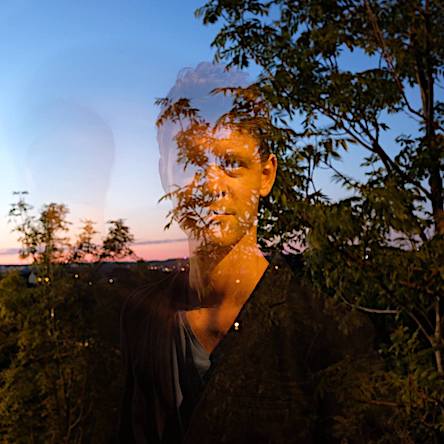 Erik Dahl: With “Ceremony” I was exploring something more rhythmical. I had written somewhere the words ‘dance to the apocalypse’. The song turned out quite joyful, which often is what happens when you dance. The sound of the two clarinets makes me smile, it’s so sweet.
Erik Dahl: With “Ceremony” I was exploring something more rhythmical. I had written somewhere the words ‘dance to the apocalypse’. The song turned out quite joyful, which often is what happens when you dance. The sound of the two clarinets makes me smile, it’s so sweet. 